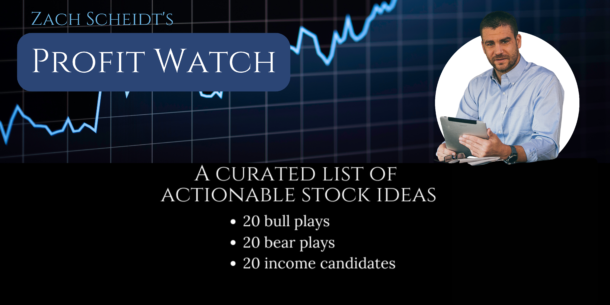
Ever wonder what the biggest investors are buying and selling?
The Securities and Exchange Commission (SEC) requires all of the biggest investors — managers with over $100 million in assets — to disclose which stocks they currently hold.
These reports are called “13F” filings and are required to be submitted each quarter.
Yesterday was the deadline for second quarter 13F reports. So today, we’ve got a chance to look through the reports and see what the biggest investors (and often smartest investors) are buying and selling.
As we look through these reports, it’s important to note that the data only gives you a single moment snapshot. In other words, we can only see what stocks investors held when the market closed on June 30.
A lot has happened between the end of the second quarter and now. So these investors may have dramatically changed positioning.
But we can still take away some important information bout how the biggest investors were positioned midway through this year.
Here are a few of my biggest takeaways:
Big Hedge Funds are Reducing Risk
Many of the most closely followed hedge funds closed huge positions in the second quarter.
For example, Michael Burry of Scion Asset Management closed all of his 11 stock positions. These positions included Meta (META), and Alphabet (GOOG) — both of which are currently included in my Speculative Trading Program.
You might remember Michael Burry from the mortgage crisis of 2008. Burry was featured prominantly in Michael Lewis’ book “The Big Short.”
Tiger Global — another prominent hedge fund — also sold stocks aggressively. The fund reduced its exposure by about 55% during the quarter. As of June 30, the fund owned roughly $11.8 billion in stocks — down from $46 billion at the beginning of the year.
Profitable Value Stocks Back in Favor
In addition to selling risky investments, many of the world’s biggest investors were also buying safe stocks.
For example, Michael Burry added only one stock during the quarter — Geo Group Corp. (GEO).
The company is a real estate investment trust that invests in private prisons and mental health facilities.
Regardless of what you think about the specific company, it’s clear that Burry is focusing on investments that generate reliable profits and pay dividends.
Dan Loeb’s Third Point Capital also disclosed a purchase of 1 million shares if Disney (DIS). Following the end of the quarter, Third Point also stated that the fund wants to open a discussion with the company’s board.
In particular, Loeb’s firm sees opportunities tied to:
- Cost cutting
- The firm’s dividend policy
- Integrating Hulu into the Disney+ platform
- A spinoff of ESPN
- Board member changes
It will be interesting to see how Disney responds to these suggestions in the weeks to come.
Plenty of Dry Powder
While some investors were discouraged to see hedge funds selling big positions, there is a silver lining to this cloud.
Many of the biggest investors now have extra cash on the sidelines that can be put to work.
This is very positive for the overall market — and especially for high-quality stocks.
With so much cash available to deploy, the biggest investors can now help to support high quality stocks.
These hedge funds are now more likely to step in and buy any pullback for profitable value stocks. And since many of these funds are also activist investors, they may also implement changes to help companies generate more profits.
Our stock market still has plenty of risk. And U.S. stocks are still largely in a bear market.
But now that the biggest investors have already unloaded speculative positions, the stage is set for more constructive markets in the second half of 2022.
Here’s to growing and protecting your wealth!
Zach
